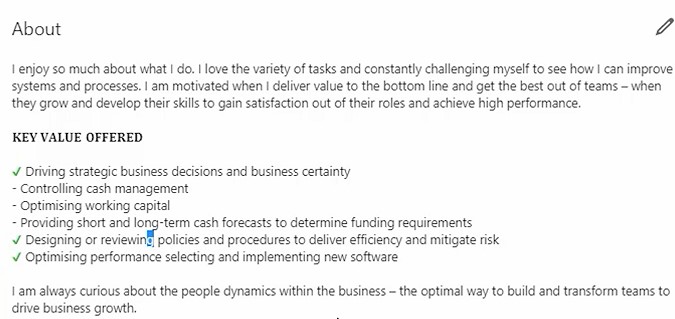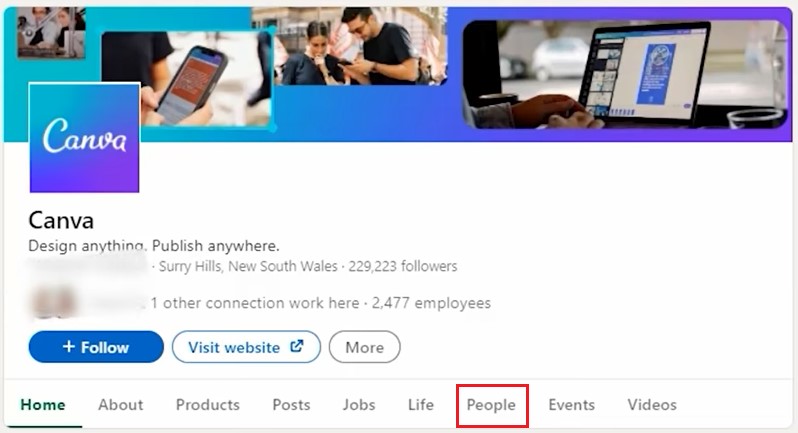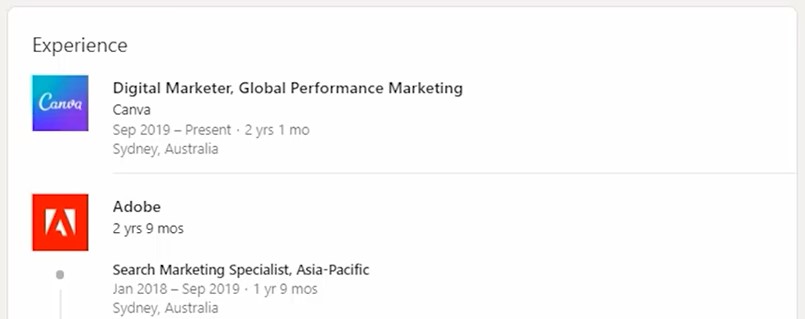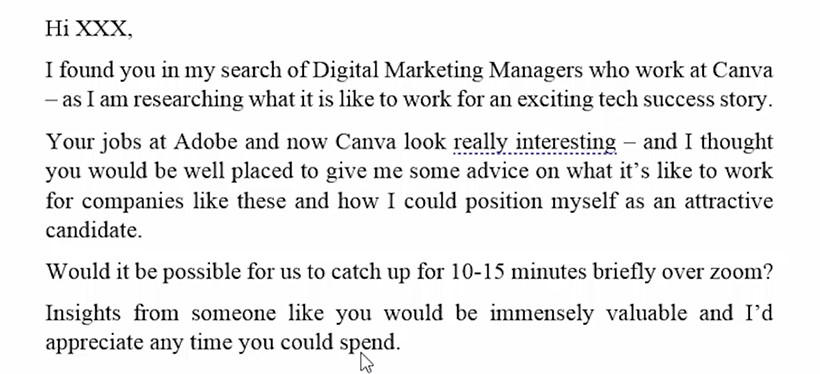Is there such a thing as a ‘hidden job market’?
Is it even possible to find jobs before they get advertised?
The answer is an absolute YES!
And this is your lucky day as I’m going to give you my 5-step formula to tap into the hidden job market. The very formula that comes from my Straight to Shortlist Challenge.
In the Straight to Shortlist Challenge, I take my clients through a step-by-step process to set them up with networking techniques, to set up their LinkedIn profile, and to learn how to get 5 meetings with 5 employers in just 5 weeks!
But before I tell you about how to tap into the hidden job market, I want to tell you why it’s so important to have this networking as a key part of your job search strategy.
The Importance of Finding Hidden Jobs
What do you need to know about the hidden job market?
Well, experts say that almost 80% of jobs are not advertised.
So, they say if you’re not networking – that is, you’re not talking to people who can help you find a job – you’re going to be missing out on a whole heap of opportunities.
To be honest, it’s hard to find the source of this research to categorically say it’s 80%.
But what I could find from big data research, proves that networking to find hidden jobs is a highly effective job search strategy.
What Research Says About Success Rates Applying For Jobs Online
From the research I’ve done, I have found that big data tracking of millions of applications says that if you apply for a job online, your chances of being successful are less than 1%.
That’s only 1 in a 100!
That’s a really low percentage.
What that same research also says is, if you find a way to be referred or recommended to a job you increase your chances of being successful tenfold!
The reason you’ve got a really low chance of being successful if you go through an online job portal or a career site is that recruiters receive approximately 90% of applications that way.
So, you’re competing against hundreds of people!
Step-by-Step Formula to Get Recommended for a Job
So, how do you get recommended or referred for a job?
I’m going to show you the exact step-by-step formula I use to take my clients through the Straight to Shortlist challenge as I mentioned before.
STEP 1: Start with Yourself
Pause and think about what you enjoy doing.
What are your strengths? How can you add value?
Use this as a guide to figure out what kind of employers you’d like to target.
This also gives you a really big confidence boost because you’re reinforcing your value.
This reflection will also help you with the conversations you’ll have when networking, and with the information, you’ll put in your LinkedIn profile.
You’ll get clarity and direction to start with.
STEP 2: Update Your LinkedIn Profile Headline, Banner, and About Section
Put the information based on your reflection in your LinkedIn profile.
This will make you seem like a credible professional. You’ll find more people will actually say yes when you reach out to connect or when you email them via LinkedIn.
Now, here’s an example of how you can set up your LinkedIn headline with that information.
In the sample profile I created below, Claire is a Financial Controller and she’s inspired by delivering bottom-line value process improvement and innovation. I’ve put a little bit about her interests as well.

The headline is the first thing people will see when you reach out to connect.
Another thing that people see first is your photo, so that’s really important too.
What I also do (which is a bit of a fun thing to do!) is to put something in the banner.
You can put a photo, quote, or whatever inspires you – that really makes your profile stand out as well.
The other part of your LinkedIn profile where you need to put that reflection information is in your About section.
So, for Claire, based on her reflection, she’s got what she enjoys, the value that she delivers, and some of her strengths.

Step 3: Search in LinkedIn for people who are working in your target organizations and roles to get their advice
Once you set your profile up, hop back into LinkedIn to do some searches.
Say you already know the type of organizations you’d like to work for and the type of job you like to do.
Go and find people who are working in similar organizations and similar roles to get their advice.
For example, if I wanted to work as a Digital Marketer in an exciting tech startup, I’d think about a company like Canva.
I would search Canva as a company on LinkedIn then click “People” on their company page.

Next, I would type some keywords into the search box to search for people who are working as Digital Marketers in Canva.

Once I found someone, I’d look on their profile to see if they are in a position to give me advice.
For example, in a profile I found, I see a Canva employee is working as a Digital Marketer in Global Performance Marketing, and before that, she was at Adobe.

So, she may well be in a great position to give me some advice about working at organizations like Canva and getting into the market.
If I have those sorts of conversations with her, she might offer to pass my resume along if a job comes up. She might also offer to keep an eye out for me for jobs that are around in that organization or jobs that she hears about.
This is a person who may link me with the hidden job market.
Step 4: Reach out to people with similar roles
So using this digital marketer as an example, the next step is to reach out to them and send them a brief email.
There are a few things to think about when you write this email.
You really do need to keep this brief, at around 100 words or less.
You need to make them feel that you’ve picked them specifically.
They need to believe that they can answer the question that you’re going to ask.
You need to word these emails in a very specific way, so this is typically what I’d write:

So, you’re telling XXX why you find them interesting and you’re telling them what you’d like to know from them.
You’re not making them guess why you are emailing them. So, it’ll be really easy for them to say yes or no.
When you request a brief meeting, like this, it’s really a sincere request.
You’re also not asking for too much of their time.
People often like to be asked what their expertise or interest is.
When you’re reaching out like this, it’s for what we call an informational interview.
You’re positioning yourself as somebody who’s really curious.
And quite often from those meetings, what you’re looking to do will come up.
If you’ve made the right impression in those meetings, you get an advocate in the job market because as I mentioned before, this person might send you some leads, refer you to somebody else, or think of you when a job comes up in that organization.
Step 5: Repeat the process
The final step is to rinse and repeat.
Every approach that you make needs to be sincere.
But it still is a numbers game.
What we’ve found recently as part of the Straight to Shortlist Challenge is you may get between a 20% to a 50%-strike rate – that is people saying yes to a meeting.
So for example, if you’ve got a 20% strike rate and you want to get 5 meetings, you’re going to need to send out 25 emails.
If you have a 50% strike rate and you want to get 5 meetings, you’re going to have to send out 10 emails.
People who have done the Straight to Shortlist Challenge have been getting amazing interviews, meetings, and job leads with employers that include:
- National Australia Bank
- EY
- KPMG
- SBS
- The ABC
- Deloitte
- Coles
- Protiviti
- Mission Australia
- Visy
- Treasury Wine Estates
- Bendigo Bank
It’s a really broad spectrum!

 Follow
Follow

{ 0 comments… add one now }